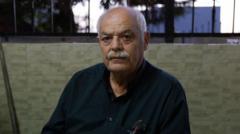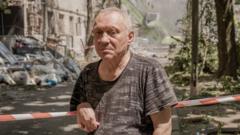As the conflict intensifies, personal stories of those affected highlight the tragic human toll amid ongoing military operations.
**Escalation in the Israel-Iran Conflict: Civilian Casualties Rise**

**Escalation in the Israel-Iran Conflict: Civilian Casualties Rise**
Recent Israeli airstrikes have led to significant civilian casualties in Iran, prompting international concern and outcry.
In the latest developments of the Israel-Iran conflict, the toll on civilians continues to rise dramatically following a series of Israeli airstrikes across various cities in Iran. Reports indicate that these attacks have resulted in hundreds of civilian deaths, among them an 8-year-old girl, a national equestrian champion, a budding poet, and a graphic designer, all of whom lost their lives in the violence that has gripped the region.
While the Israeli government asserts that its military operations are focused on targeting military figures such as commanders and nuclear scientists, evidence suggests a high number of civilian casualties. Initial reports from the Iranian Ministry of Health estimate that at least 224 people have been killed and nearly 2,000 injured. However, these numbers are expected to rise significantly as new casualties continue to emerge. Doctors and families from cities including Tehran, Shiraz, and Isfahan described the harrowing impact of the strikes, illustrating a community in mourning and fear.
With accounts from over 50 residents, as well as extensive examination of videos and testimonies, it has become increasingly clear that a significant majority of the casualties—up to 90%, according to medical sources—are civilians. This has led to a distorted reality in urban areas where the regular sounds of city life have been replaced by the unmistakable sounds of air defense systems, explosions, and sirens.
In response to these ongoing developments, public sentiment within Iran reflects shock and sorrow as life in cities like Tehran is drastically altered. The frequency and scale of these attacks leave little room for normalcy or hope, emphasizing the urgent need for humanitarian considerations and potential diplomatic resolutions amid the violence.
While the Israeli government asserts that its military operations are focused on targeting military figures such as commanders and nuclear scientists, evidence suggests a high number of civilian casualties. Initial reports from the Iranian Ministry of Health estimate that at least 224 people have been killed and nearly 2,000 injured. However, these numbers are expected to rise significantly as new casualties continue to emerge. Doctors and families from cities including Tehran, Shiraz, and Isfahan described the harrowing impact of the strikes, illustrating a community in mourning and fear.
With accounts from over 50 residents, as well as extensive examination of videos and testimonies, it has become increasingly clear that a significant majority of the casualties—up to 90%, according to medical sources—are civilians. This has led to a distorted reality in urban areas where the regular sounds of city life have been replaced by the unmistakable sounds of air defense systems, explosions, and sirens.
In response to these ongoing developments, public sentiment within Iran reflects shock and sorrow as life in cities like Tehran is drastically altered. The frequency and scale of these attacks leave little room for normalcy or hope, emphasizing the urgent need for humanitarian considerations and potential diplomatic resolutions amid the violence.





















